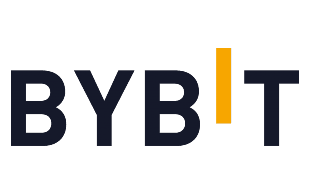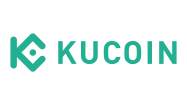Disclaimer: This page is not financial advice or an endorsement of digital assets, providers or services. Digital assets are volatile and risky, and past performance is no guarantee of future results. Potential regulations or policies can affect their availability and services provided. Talk with a financial professional before making a decision. Finder or the author may own cryptocurrency discussed on this page.
6 steps to make NFTs
You don't need a lot of raw materials to create an NFT. Here are six steps to follow to make an NFT.
Step 1: Choose a digital file
Every NFT is a digital file, and you need to have a file in an acceptable format. As long as they're under 100MB, these formats are typically accepted among marketplaces and blockchains:
- JPG
- MP3
- MP4
- PNG
- GIF
- WAV
- OBB
- GLB
- SVG
Many NFTs are static art pieces, but they can be videos or GIFs. Creators can pair music and art, creating an audiovisual NFT. Pixel art, memes, video game characters and trading cards are all genres to consider.
When designing the NFT, know that copyright and intellectual property rights apply. If you take someone else's artwork and mint it with the intention to sell it, you could run into legal trouble.
If you're not an artist or don't have the capability to create your own unique digital file, then you can commission someone to create an art NFT for you.
Step 2: Choose an NFT marketplace
NFTs exist on a blockchain, which is a decentralized public ledger allowing for information to be recorded and verified, without any capability of being edited. A large majority of NFT platforms are built on the blockchain Ethereum, such as OpenSea, LooksRare, Foundation, Rarible and Decentraland. Ethereum is an open-source blockchain with smart contract functionality, and it's known for its fast transaction times. Each blockchain has its own native currency as well — Ethereum's is ether (ETH). Other popular blockchains include EOS, Stellar, Paxful, Binance Smart Chain and Binance Chain. Some marketplaces use their own blockchain tech, such as Gate.io, called GateChain.Step 3: Set up a crypto wallet
When you're involved in cryptocurrency and digital assets, you need a crypto wallet. A crypto wallet is software or hardware designed to hold, send or display cryptocurrency and NFTs, and most are free to use. When you make an NFT, there's a transaction fee for putting the digital file on the blockchain, so you'll need some crypto in the wallet to cover that fee. In terms of what cryptocurrency you need, it depends on the blockchain. For example, Ethereum transaction fees (called gas fees) are paid in ETH. There are many different wallets to choose from. However, the marketplace you choose to mint your file on may require a specific wallet. Some popular wallets include MetaMask, Trust Wallet, Ledger, Atomic Wallet and Exodus. There are also different types of wallets:- Hot wallet — Involves downloading a browser extension, is always online and typically free software. May be more prone to online hacks, though.
- Cold wallet — External hardware that's only online when plugged in, and could run you between $60 to $200 or more. More secure since they're not always online, but may be a hassle for users that prefer mobile trading.
- Custodial — A wallet where a third-party holds and protects your wallet's private keys for you.
- Noncustodial — You're in control as to how and where your private keys are stored.
Step 4: Buy crypto
To tokenize a digital file and put it on a blockchain, you have to pay a gas fee to finalize the transaction.
Depending on the marketplace you choose, you need some type of cryptocurrency to cover the gas fees. These fees vary by the second.
Buying cryptocurrency starts with having a wallet and finding an exchange. Exchanges vary in what coins they offer, but you can count on almost every one having Bitcoin (BTC) and ether (ETH). Once you're signed up with the exchange and connect your digital wallet, simply deposit funds in the approved methods and select the currency you want.
Step 5: Mint your NFT
Once you have a wallet and connect it to the marketplace of your choice, you can start the process of minting your NFT. Most marketplaces are clear on where to go to mint an NFT, with clear buttons like Create NFT or Mint NFT. Common steps in minting an NFT include:- Creating an account with the marketplace
- Uploading your digital file
- Fleshing out the details of the NFT, like title and description
- Paying the gas fee for interacting with the blockchain
Step 6: Monetize your NFT
Now that you've gone all this way to make your NFT, the next step is to figure out what to do with it. Many NFT creators get into the space to earn money from selling their NFTs. The simplest way to do that is by minting the NFT on a blockchain with smart contract functionality so you can earn royalties on subsequent sales. Before you choose a marketplace, compare royalty percentages so you can get the most bang for your buck. However, try not to set the royalty percentage too high — such as higher than 40% — so that buyers and sellers see resale value in your NFTs. Consider these use-cases for NFTs:- Selling — You can list your NFT for sale on a marketplace. Many marketplaces have multiple selling methods, or at the very least, fixed sales or auction sales.
- Flipping — Some NFTs can appreciate in value, dependent on many factors like rarity, creator ethos and ownership history. You can try your hand at buying and selling NFTs in hopes to earn.
- Use in the metaverse — Metaverse games like The Sandbox and Decentraland allow players to make their own digital assets to be used in the game. A metaverse game may have its own creation software so users can create NFT wearables, furnishings, avatars, usernames and more to be sold on the marketplace.
- Create collections — Collections are very popular in the NFT space. Large NFT collections typically follow a theme but have varying attributes, rarity and features. Bored Ape Yacht Club and CryptoPunks are famous examples of 10K NFT collections.
- Display — You can display your NFTs in your crypto wallet, use them as a profile picture on X (formerlyTwitter), or even curate your own NFT art collection in the metaverse.
Compare marketplaces to make NFTs
One of the most important steps in creating an NFT is choosing a marketplace. Check that it sells your preferred NFT category, has a reputable blockchain and offers the royalty percentage you want.
Are you visiting from outside the US?
How much does it cost to make an NFT?
Making an NFT means paying transaction fees for interacting with the blockchain. When you're dealing with NFTs, expect to pay a gas when buying, selling, minting or listing an NFT. This is fee is paid in the blockchain's native cryptocurrency. A gas fee is like a processing fee. The fee is used to power the blockchain and keep things moving. Processing transactions on blockchains requires power, so those interacting with the blockchain pay a fee. Gas fees can vary depending on the time of day, the complexity of the transaction, congestion of the network and the processing speed. A single transaction could cost you anywhere from $1 to $1,000, depending on which blockchain you choose and the previously mentioned factors. And if you pay someone to create the digital file that's going to be made into an NFT, that's another cost to keep in mind.What to watch out for if when making NFTs
Keep these tips in mind when making NFTs:- Want lower gas fees? When minting and listing NFTs, gas fees are part of the gig. For a chance at lower gas fees, consider minting and listing your NFTs during the blockchain "slow time." For example, Ethereum's slowest, cheapest time is the weekend.
- Gasless minting. Some marketplaces, like Mintable, allow for lazy minting, or gasless minting. This means that minting your NFT doesn't cost any gas fees upfront, and the file is placed on the blockchain once the asset is sold, and the buyer pays this gas fee. However, there is usually a higher marketplace fee with gasless minting.
- Keep your wallet safe. Crypto wallets are protected by private keys or passphrases. Never give out your wallet's private keys to anyone for any reason. If someone were to get ahold of that information, they could take your stored digital assets. Your wallet's public key is all that's needed to send or receive digital assets.
- Copyright laws. Be sure that when you're creating NFTs — or commissioning a design from someone else — that you're not infringing on someone else's intellectual property, purposefully or accidentally. If you're hiring a designer, you may need to purchase the copyright and intellectual property rights along with the design.
- Read the fine print. As a creator, read your chosen marketplace's terms on the royalty percentage you earn with each sale of your own NFTs. Some marketplaces may give you less than 10%.
- You may not earn. Creating an NFT doesn't guarantee that you'll make money. The value of an NFT is largely determined by consumer interest and the value of cryptocurrency, and once you list an NFT, there's a possibility that it may not sell right away or at all.
Compare platforms to hire an NFT designer
Whether products shown are available to you is subject to individual provider sole approval and discretion in accordance with the eligibility criteria and T&Cs on the provider website.
Ask a question







